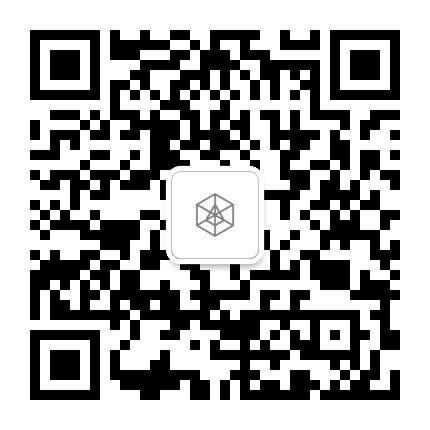ArcBlock launches OCAP Playground
2018-06-30
designed to simplify blockchain app creation for developers
On June 30, ArcBlock officially launched its first application: OCAP Playground.
This is a developer tool built on Open Chain Access Protocol, and it’s also the fastest, simplest and most user-friendly blockchain application development environment in the industry. As long as you have a web browser, you can immediately begin to develop blockchain applications without any downloads or installations.
This first app embodies ArcBlock’s goal: to drastically reduce the barriers to blockchain development
Since ArcBlock’s debut on January 6, the blockchain industry and community have been curious about what ArcBlock's first decentralized application (DApp) would be. After much internal discussion, ArcBlock’s team chose OCAP Playground as the first DApp to develop, and scheduled is launch in the second quarter.
With a simple, unified, interactive terminal to access different blockchains for the first time, developers have an opportunity to be free from such burdens as installing blockchain nodes and the SDK (software development kit) or learning different languages and technologies of different blockchains. Instead, they can concentrate on designing and developing their own blockchain application.
"Only by significantly improving the developer experience and lowering the barriers to the development of blockchain applications can we promote the popularization of blockchain technology," said Robert Mao, ArcBlock's founder and CEO. ”Nobody can make developing blockchain easier than OCAP Playground.” OCAP Playground’s debut also sends a clear message to the market that ArcBlock is committed to creating a cloud service platform for building and deploying DApps.
Through the interactive terminal of OCAP Playground, developers can directly access different blockchains, and develop and debug various GraphQL-based queries. When you log in to the new version of ArcBlock's official website and open the OCAP Playground, you will see that the query input area is on the left and the result output area is on the right. For example, if you query Bitcoin, you can query the block height, size, and hash value of this block and the previous block, and click to execute. You can get the query results in JSON format from OCAP.
For the convenience of developers, ArcBlock provides different rendering formats, such as tables for most data presentation, and charts for more intuitive understanding of some data. If developers are not familiar with Bitcoin and Ethereum data formats, OCAP Playground provides integrated documentation to learn more about the data formats and structures of different blockchains. If the developer makes multiple queries, you can easily call up various results by clicking on different query codes through the history function.
More about Open Chain Access Protocol
The OCAP Playground is a developer tool based on the OCAP, so its formal release also means that the OCAP public beta service is quietly online, and as OCAP expands, the functionality of OCAP Playground will improve. At present, the public beta version of OCAP supports the underlying blockchain such as Bitcoin and Ethereum. ArcBlock’s team and community will continuously work to expand OCAP support for the new blockchain.
OCAP is the fundamental core of the ArcBlock platform, an open source protocol that provides an abstract interface layer to access the underlying blockchain to help applications work on different blockchains. According to the ArcBlock technical white paper, it’s "similar to the relationship between ODBC or JDBC in a data application and various databases. You don't even need to change your business logic code when switching between different underlying blockchains, or blockchains using multiple protocols." By connecting different blockchains through simple and consistent interface access, OCAP solves the problem of platform lock-in and user selection by enabling developers to ignore the underlying details of various blockchains.
With GraphQL, OCAP Playground makes accessing blockchain easier and more intuitive
To make front-end queries flexible and efficient and have a good developing experience, the query language defined by OCAP is Facebook’s GraphQL. Robert says, "We didn’t reinvent the wheel. We neither adopted RESTful, which is generally used in the industry, nor did we invent a fancy new language. We adopted GraphQL. It’s a way of using unified access to application data. It makes OCAP very simple to use, which is our design purpose: simplicity of the front-end is enabled by complicated encapsulation of the back-end design."
Supported by GraphQL, ArcBlock allows developers to take full advantage of the tools and frameworks already available in the GraphQL community. Among the first blockchain companies adopting GraphQL, ArcBlock will introduce blockchain innovation into the GraphQL community. Through technology sharing, both parties will strengthen their own ecosystems, together.
Looking ahead
According to Robert Mao, the construction of ArcBlock’s platform is on track with the previously-announced product roadmap. Now that OCAP Playground’s public beta has launched, ArcBlock’s community of developers can participate in developing DApps. ArcBlock will release a demo app on its official website to inspire people. At the same time, ArcBlock will cooperate with influential technology communities at home and abroad to hold hackathons. These events will encourage people to develop innovative applications, the best of which will win the ArcBlock Token award. Future versions of OCAP Playground will be extended to OCAP Playbook, an interactive document that allows developers to share code snippets and prompts. Eventually, OCAP Playground will evolve into an application-hosting environment where developers can develop real, full-blown blockchain applications.



